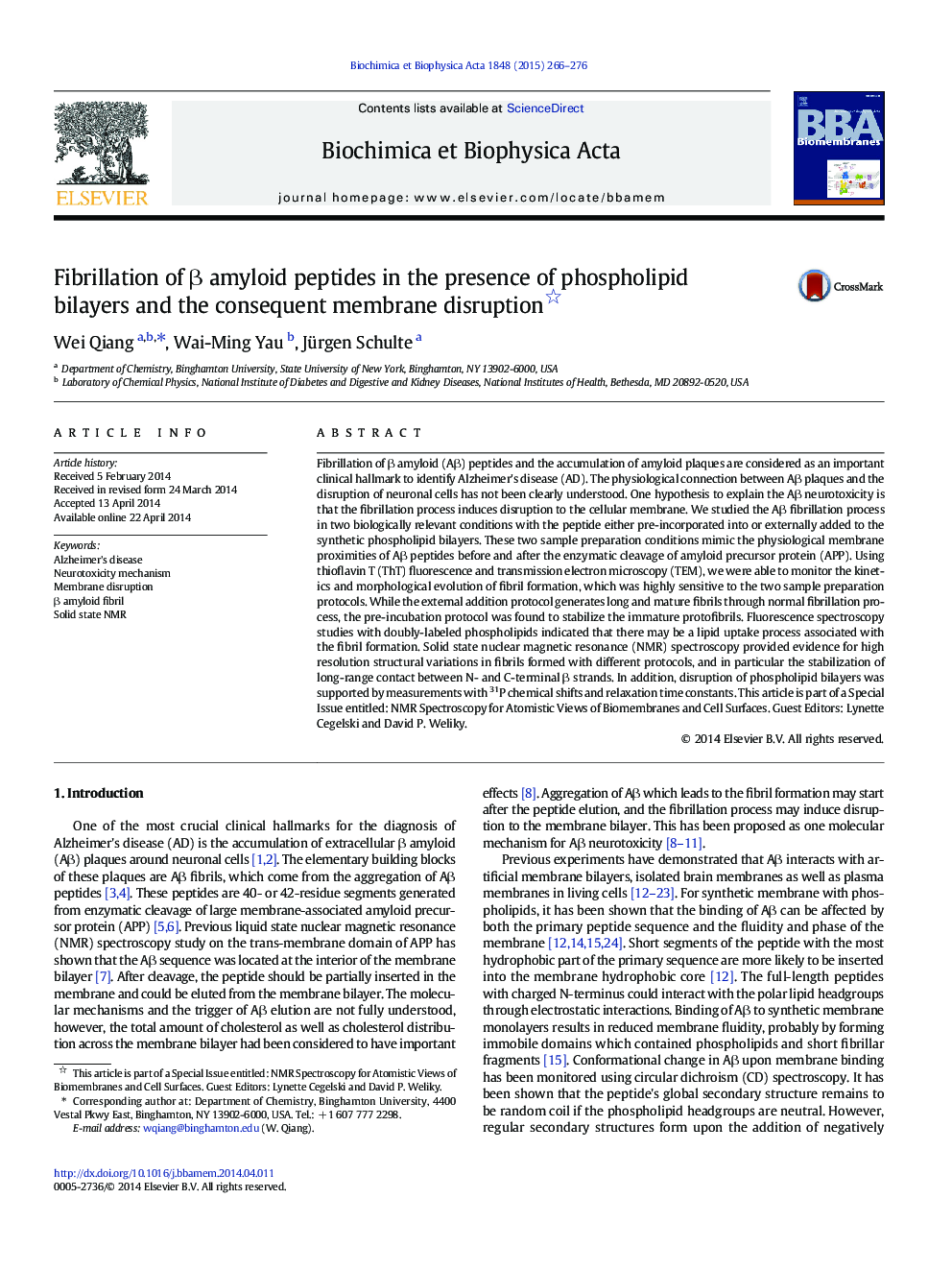| کد مقاله | کد نشریه | سال انتشار | مقاله انگلیسی | نسخه تمام متن |
|---|---|---|---|---|
| 1944052 | 1053175 | 2015 | 11 صفحه PDF | دانلود رایگان |

• Fibrillation kinetics and morphological evolution are monitored for Aβ fibrillation with membrane bilayers.
• Aβ fibrillation may be associated with phospholipid uptake from bilayers.
• Fibril structures, particularly long-range contact, are different for different fibrillation conditions.
• 31P solid state NMR studies indicate membrane disruption due to Aβ fibrillation.
Fibrillation of β amyloid (Aβ) peptides and the accumulation of amyloid plaques are considered as an important clinical hallmark to identify Alzheimer's disease (AD). The physiological connection between Aβ plaques and the disruption of neuronal cells has not been clearly understood. One hypothesis to explain the Aβ neurotoxicity is that the fibrillation process induces disruption to the cellular membrane. We studied the Aβ fibrillation process in two biologically relevant conditions with the peptide either pre-incorporated into or externally added to the synthetic phospholipid bilayers. These two sample preparation conditions mimic the physiological membrane proximities of Aβ peptides before and after the enzymatic cleavage of amyloid precursor protein (APP). Using thioflavin T (ThT) fluorescence and transmission electron microscopy (TEM), we were able to monitor the kinetics and morphological evolution of fibril formation, which was highly sensitive to the two sample preparation protocols. While the external addition protocol generates long and mature fibrils through normal fibrillation process, the pre-incubation protocol was found to stabilize the immature protofibrils. Fluorescence spectroscopy studies with doubly-labeled phospholipids indicated that there may be a lipid uptake process associated with the fibril formation. Solid state nuclear magnetic resonance (NMR) spectroscopy provided evidence for high resolution structural variations in fibrils formed with different protocols, and in particular the stabilization of long-range contact between N- and C-terminal β strands. In addition, disruption of phospholipid bilayers was supported by measurements with 31P chemical shifts and relaxation time constants. This article is part of a Special Issue entitled: NMR Spectroscopy for Atomistic Views of Biomembranes and Cell Surfaces. Guest Editors: Lynette Cegelski and David P. Weliky.
Figure optionsDownload high-quality image (138 K)Download as PowerPoint slide
Journal: Biochimica et Biophysica Acta (BBA) - Biomembranes - Volume 1848, Issue 1, Part B, January 2015, Pages 266–276